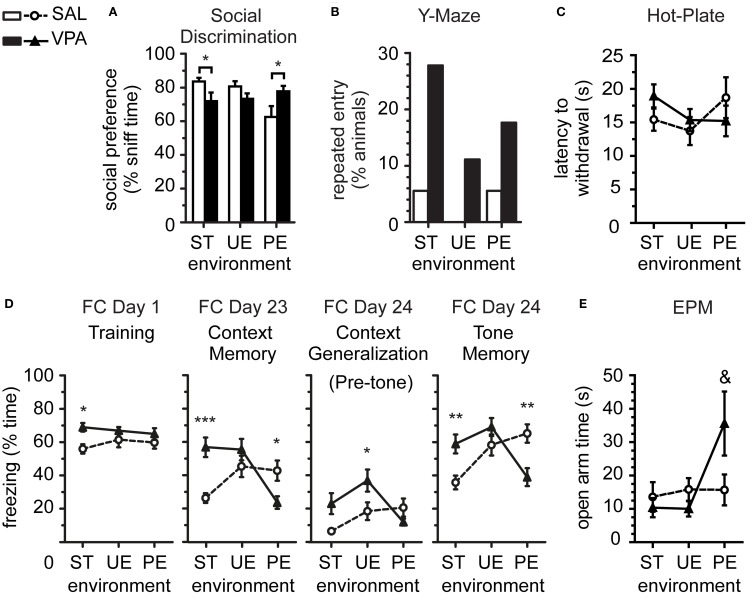Figure 1.
Predictable enrichment effects on sociability, stereotypy and nociception, and reduction of fear and anxiety in VPA group. (A) Preference for social stimulus sniffing over total stimuli sniffing time in Social Discrimination test was reduced in VPA vs. SAL in ST, and reversed in the VPA relative to SAL when in PE but not in UE environments. (B) Number of animals spontaneously re-entering the same arm in the Y-Maze was greater in VPA vs. SAL when pooled, but no significant effects when split by environment (shown here), where rare counts prevented clear interpretation. (C) Latency to hind paw withdrawal in the Hot-Plate test was variable, with no statistically significant effects. (D) Pavlovian Fear Conditioning (FC) showed that long-term enhanced fear (freezing) in VPA vs. SAL in ST was reduced specifically in PE, whereas both enrichment conditions enhanced memory in SAL. (E) Total time spent in the open arms of the elevated-plus maze (post-battery EPM), generally low in most groups, indicated reduced anxiety in some VPA animals reared in PE (F-test higher variance). Data in (A,C–E) show mean ± s.e.m. for each group. Sample sizes: SAL nST = 18, nUE = 18, nPE = 18; VPA nST = 18, nUE = 18, nPE = 17. Asterisks denote significant VPA × SAL mean comparisons, Bonferroni corrected, *p < 0.05, **p < 0.01, ***p < 0.001. Ampersand denotes significant VPA × SAL variance comparisons &p < 0.01. VPA, valproic acid; SAL, saline; ST, standard environment; UE, unpredictably enriching environment; PE, predictably enriching environment.

